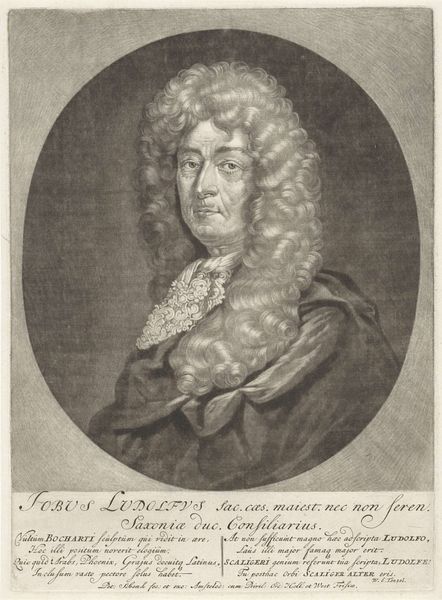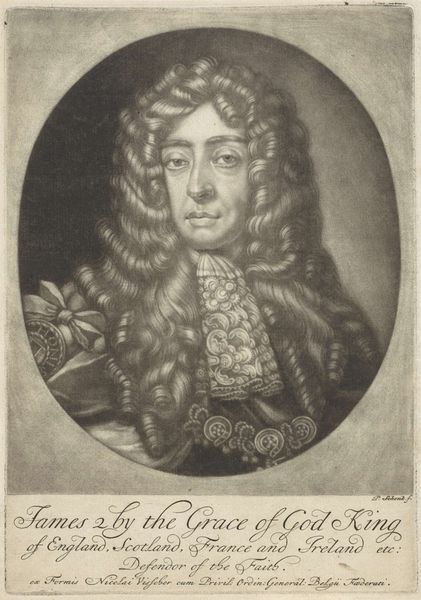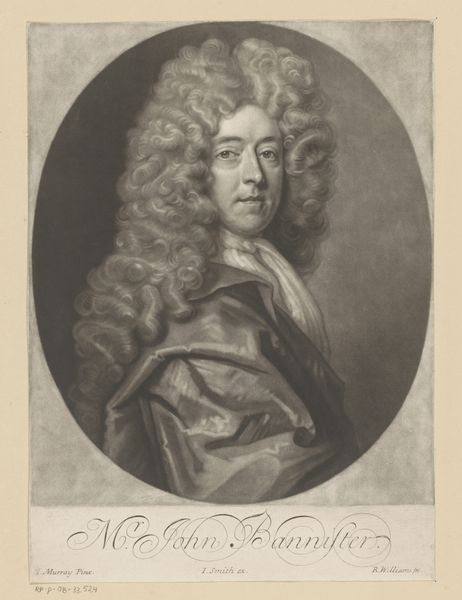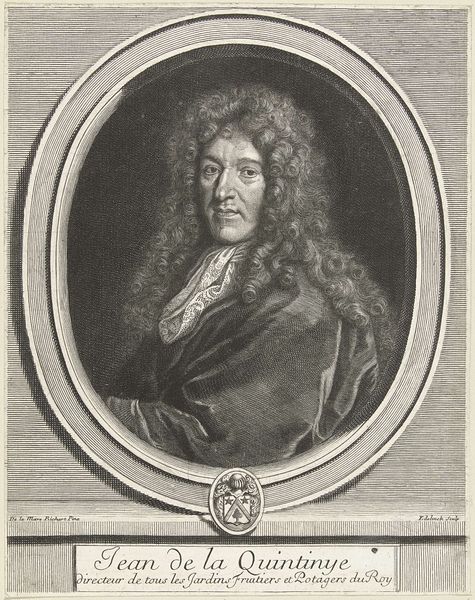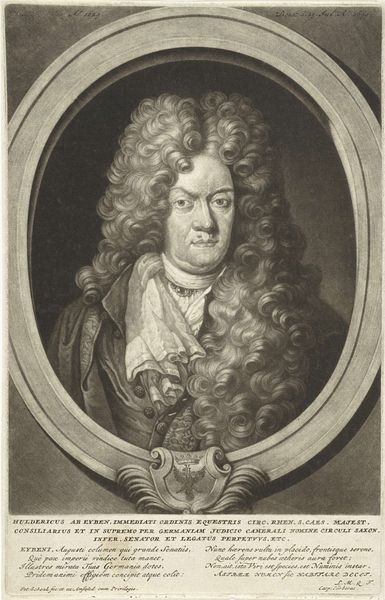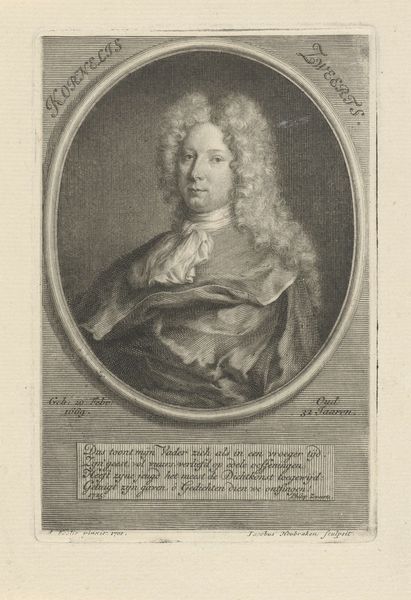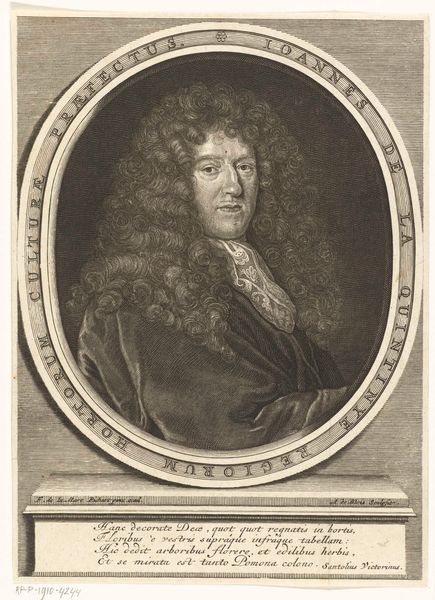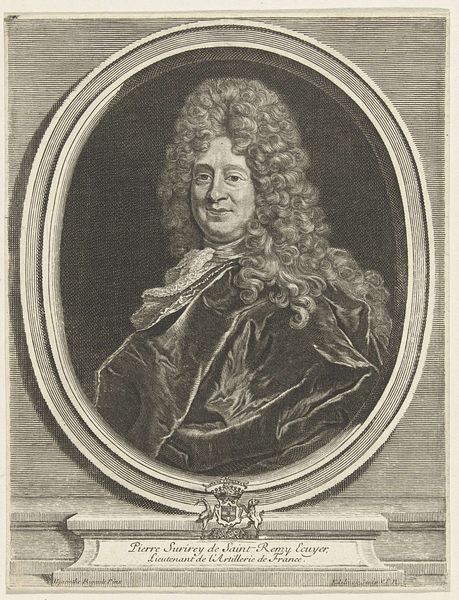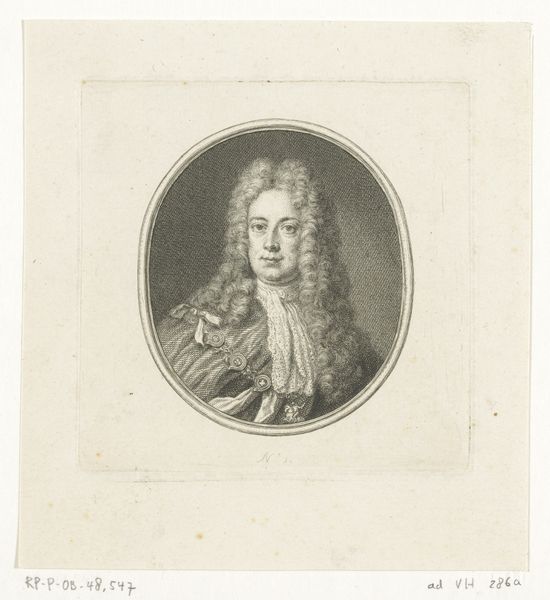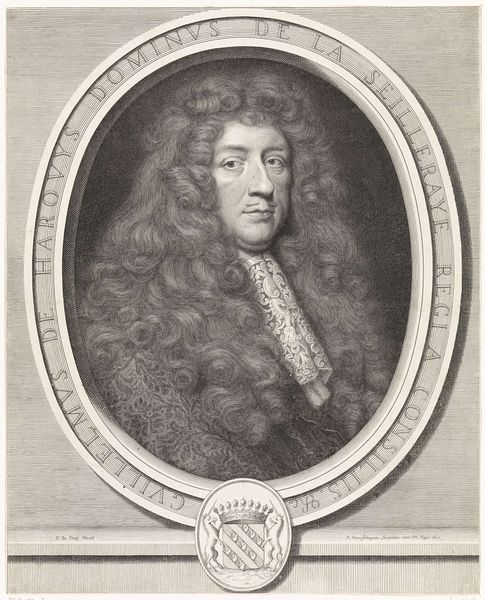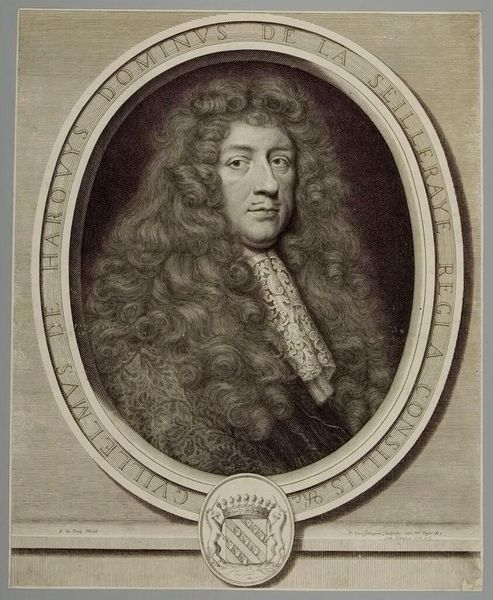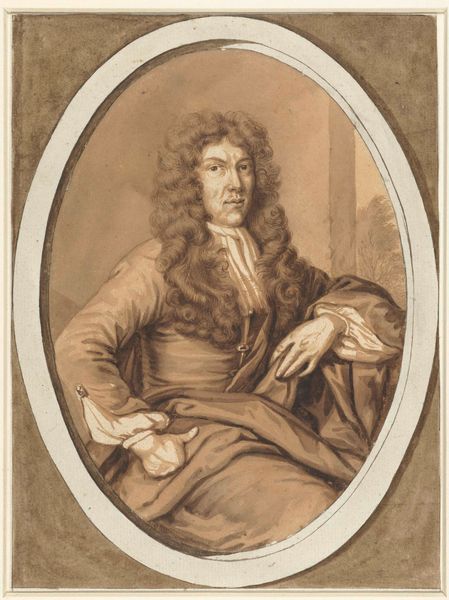
print, engraving
#
portrait
#
baroque
# print
#
engraving
Dimensions: height 247 mm, width 178 mm
Copyright: Rijks Museum: Open Domain
Curator: Welcome. We're looking at "Portret van Job Ludolf," a print dating from 1670 to 1713, currently held in the Rijksmuseum collection. It was made by Pieter Schenk using engraving. Editor: The sepia tone immediately evokes a sense of archaic gravity, almost melancholic, doesn't it? The composition, sealed within that oval, feels formal and very contained. Curator: Absolutely. This Baroque portrait speaks volumes about status and intellectual pursuits. Ludolf, with his elaborate wig and lace collar, is clearly presented as a man of importance. Think of wigs as visual signals of privilege during this period. Editor: And look how the light models the texture of that wig. The circular composition draws your eye immediately to the gaze which carries significant visual weight. I notice that oval, almost as a frame within a frame, isolates his expression in time and almost memorializes Ludolf. Curator: Precisely. The inscription below, in Latin, reinforces this. Text functioned, much as symbols do today, to give context, almost anchors of memory about the depicted subject. Job Ludolf, a noted orientalist, his life was dedicated to languages and law, signified learning, knowledge, scholarship. The wig, the collar, all function as keys into an elite world. Editor: A semiotician would appreciate how everything in this engraving serves as a visual code, reinforcing a carefully crafted message of intellect and stature. A man literally encased in the accoutrements of scholarly significance. Curator: The contrast between the ephemeral medium of print and the intended message of lasting legacy is quite fascinating, don't you agree? This image aims to preserve Ludolf’s memory, making him eternally visible through each printed impression. Editor: Indeed, what’s impressive is how Schenk translates those complex ideas into an accessible visual vocabulary through that linear quality which emphasizes light and shadow. That linearity serves not merely descriptive but interpretive purpose, capturing character through visual language. Curator: Thinking about the symbolism embedded here, Schenk's choices give the engraving its weight, reminding us of how portraits of prominent figures act like echoes of power and intellectual authority, all coded for their contemporaries and also for posterity. Editor: Reflecting on this engraving, I am reminded how carefully structured its visual rhetoric truly is, while, at the same time, seeing through time the cultural values and societal markers the subject uses.
Comments
No comments
Be the first to comment and join the conversation on the ultimate creative platform.
